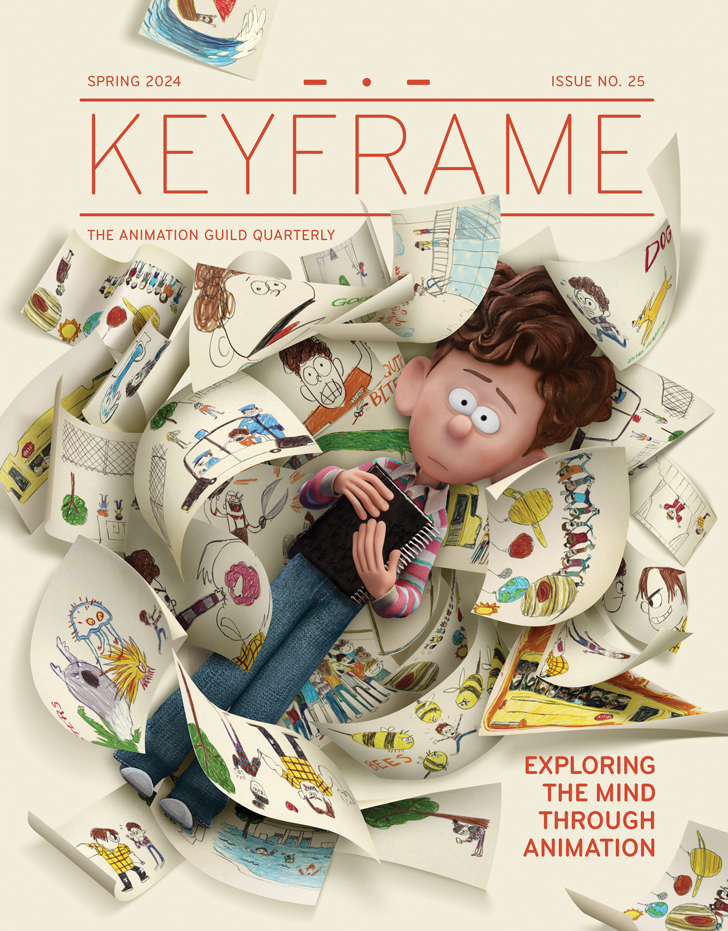 Photo by Emily Waters.
Photo by Emily Waters.Tell us a little about yourself and your career.
I’ve been working as a Background Painter/Designer/Vis Dev Artist since 2014 for studios such as Titmouse, DreamWorks TVA, and Warner Bros. TVA. I like documentaries about cults, music that sounds like it came from aliens trying to communicate with us by way of 1970s children’s TV shows, and coming up with elaborate nicknames for cats.
Who are your inspirations in the field of animation?
I’ve been drawn to really punchy and graphic background design ever since I was a kid watching Batman: The Animated Series and Samurai Jack, and my approach to shape and color composition is heavily indebted to classic illustrator/animation artists like Charley Harper, Mary Blair, and Eyvind Earle. I’m always really impressed with artists who can combine simplicity, abstraction, and a sense of lived-in realism like Kevin Dart, Tadahiro Uesugi, Jasmin Lai, and Chris Appelhans.
What challenges have you faced in navigating a career in animation?

My career has always been kind of feast or famine in terms of work. There have been times where I won’t have any leads for months at a time before getting offered three jobs at once. As a result, I’m always kind of thinking like an animal storing up food for winter hibernation, just cramming in as much freelance as I can in case I wind up not working for a while at any point in the future. It definitely feels like I spend a lot of time either exhausted from the amount of work I’m doing or desperately looking for employment—it’d be nice to be able to find a better balance.
What do you hope to accomplish as an artist in the animation industry?
Sometimes I’ll be in the middle of working on the first season of a show, on an episode or a scene that I think is really strong, and think to myself: “This could be something special. This could be someone’s favorite show, this could be something that really connects with them, something they go back to over and over. This could be the show that someone sees themselves in, or the show that inspires someone to make art of their own.” Getting nine seasons of a show would be nice, especially from the job security side, but to me the most important part is “am I making something that’s going to be special to someone?”
What does being in the Union mean to you?
The best argument for our Union and for unions in general is to do what I did and spend a couple of years fresh out of college working in non-union industries and experience firsthand the kind of worker exploitation that artists experience when they don’t have collective power backing them up. As soon as I started my first animation job, my hourly pay went up by like 30%, just for a ground-floor background design job. I’ve only ever had one late paycheck working in animation, and the studio immediately dropped the company responsible for it. My base rate of pay rises on a regular basis without me even having to negotiate for it. These are things that every working person deserves, and I’m really proud to be part of an organization that fights for them.
See more of Wong’s work at his website.
Follow him on Instagram and Twitter.









.png)